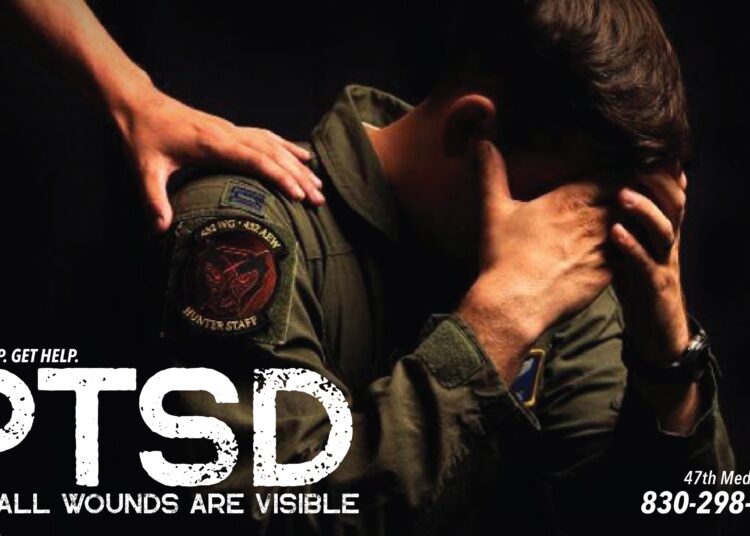This article sheds light on the impact of post-traumatic stress disorder (PTSD) on military personnel. It highlights the prevalence of PTSD in the military and the various symptoms and effects it can have on individuals. The article also discusses the stigma and barriers that prevent military personnel from seeking treatment, as well as the importance of advocacy and support in combating these issues. It emphasizes the need for creating a supportive environment within military units and explores the available treatment options for PTSD. Ultimately, the article stresses the importance of providing care and compassion to military personnel affected by PTSD and working towards breaking down the barriers to treatment.
The Invisible Battle: Shedding Light on PTSD and its Impact on Military Personnel
Introduction
Post-Traumatic Stress Disorder (PTSD) is a mental health disorder that affects individuals who have experienced or witnessed traumatic events. While PTSD is often associated with military personnel due to their exposure to combat, it can affect anyone who has experienced traumatic incidents. This article focuses on understanding the impact of PTSD specifically on military personnel, shedding light on its invisible battle and the challenges faced by those who suffer from it.
The Reality of PTSD in the Military
PTSD is a significant issue affecting military personnel worldwide. The intense and prolonged exposure to traumatic events such as combat, witnessing injury or death, and experiencing life-threatening situations contribute to the development of PTSD in military personnel. According to research, it is estimated that approximately 10-20% of veterans experience PTSD after their service, highlighting the magnitude of the problem.
The Symptoms and Effects of PTSD
PTSD manifests through various symptoms, both psychological and physical. Common psychological symptoms include intrusive thoughts and memories, nightmares, flashbacks, hyperarousal, emotional numbness, and avoidance of triggers related to the traumatic event. These symptoms can be debilitating and significantly impact the daily lives of military personnel, affecting their personal relationships, work performance, and overall well-being.
The Stigma and Barriers to Treatment
Despite the prevalence of PTSD in military personnel, there remains a stigma associated with seeking help and treatment. Many service members fear that acknowledging their mental health struggles may negatively impact their military career or hinder their perceived toughness. Additionally, the macho culture prevalent in military settings often discourages individuals from seeking support, further perpetuating the stigma surrounding mental health.
Moreover, there are several barriers that prevent military personnel from accessing appropriate and timely treatment for PTSD. These barriers include limited access to mental health resources, lack of awareness about available support systems, long wait times, and the fear of being stigmatized within their units. These factors often result in delayed or inadequate treatment, exacerbating the long-term consequences of PTSD.
The Importance of Advocacy and Support
Raising awareness about PTSD among military personnel, their families, and the wider community is crucial in combating the stigma and breaking down barriers to treatment. Advocacy groups, veterans organizations, and mental health professionals play a vital role in providing education, resources, and support to those affected by PTSD.
Additionally, creating an open, non-judgmental environment within military units is essential for encouraging individuals with PTSD to seek help. Military leaders and fellow service members should undergo training to recognize the signs of PTSD and be aware of available resources to provide the necessary support. By normalizing the conversation around mental health and fostering a culture of compassion, military personnel can feel more comfortable seeking the help they need.
Treatment Options and Road to Recovery
Fortunately, there are evidence-based treatments available for PTSD that have proven to be effective in aiding the recovery process. These treatments include cognitive-behavioral therapy (CBT), eye movement desensitization and reprocessing (EMDR), and medication, among others. It is important for military personnel to seek professional help and explore different treatment options to find what works best for them.
The road to recovery from PTSD is not linear; it requires time, patience, and ongoing support. It is essential for military personnel to establish a support system consisting of mental health professionals, family, and friends who can provide understanding, encouragement, and empathy throughout the recovery process.
Conclusion
PTSD remains an invisible battle faced by many military personnel around the world. The impact of this mental health disorder can be devastating, affecting not only the individuals suffering from it but also their families and communities. By shedding light on PTSD, raising awareness, and fostering a supportive environment, we can help alleviate the stigma and break down the barriers to treatment for military personnel, enabling them to embark on the path to recovery and reclaim their lives. It is our responsibility to provide the care and compassion that our brave service members deserve.













